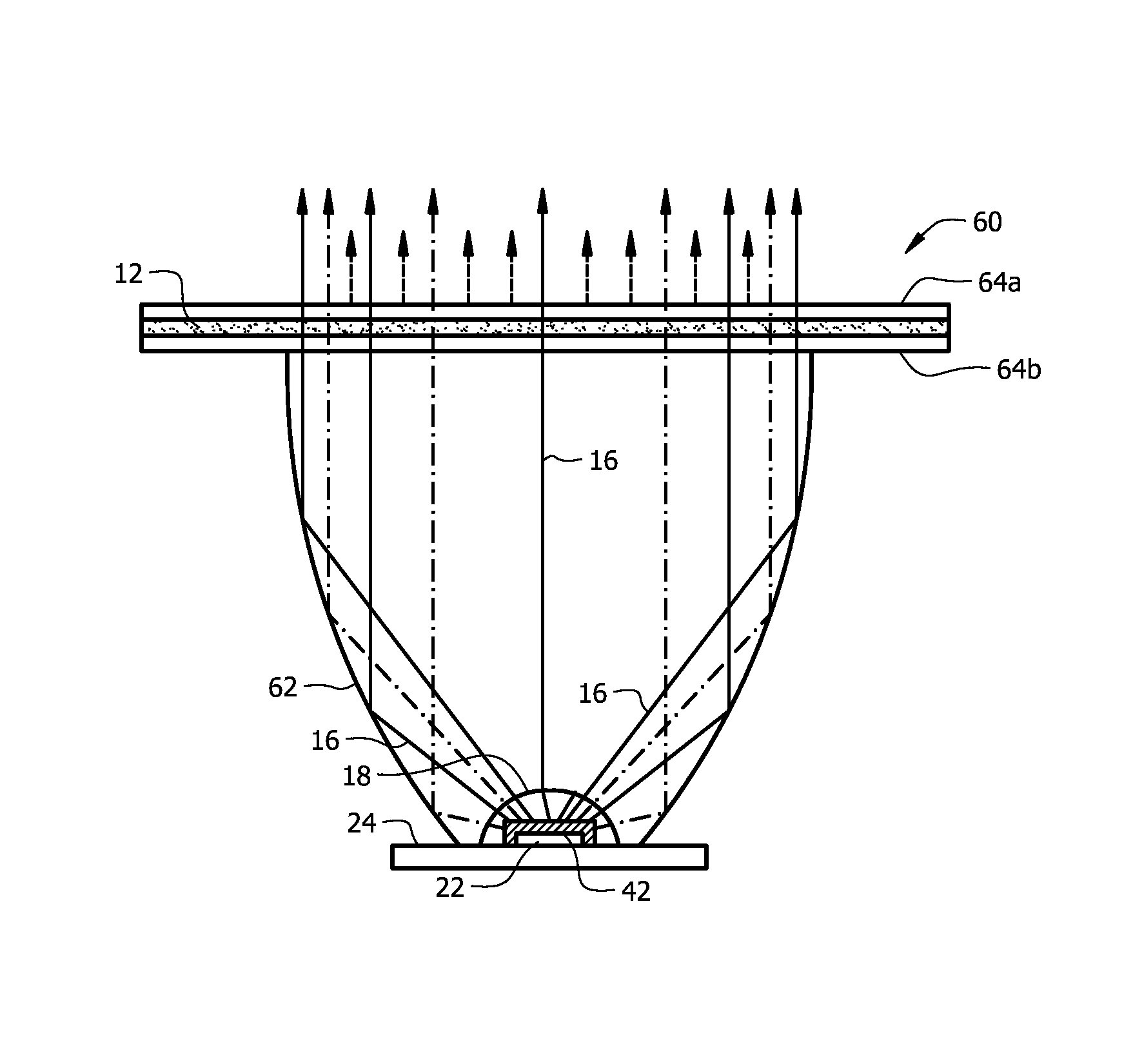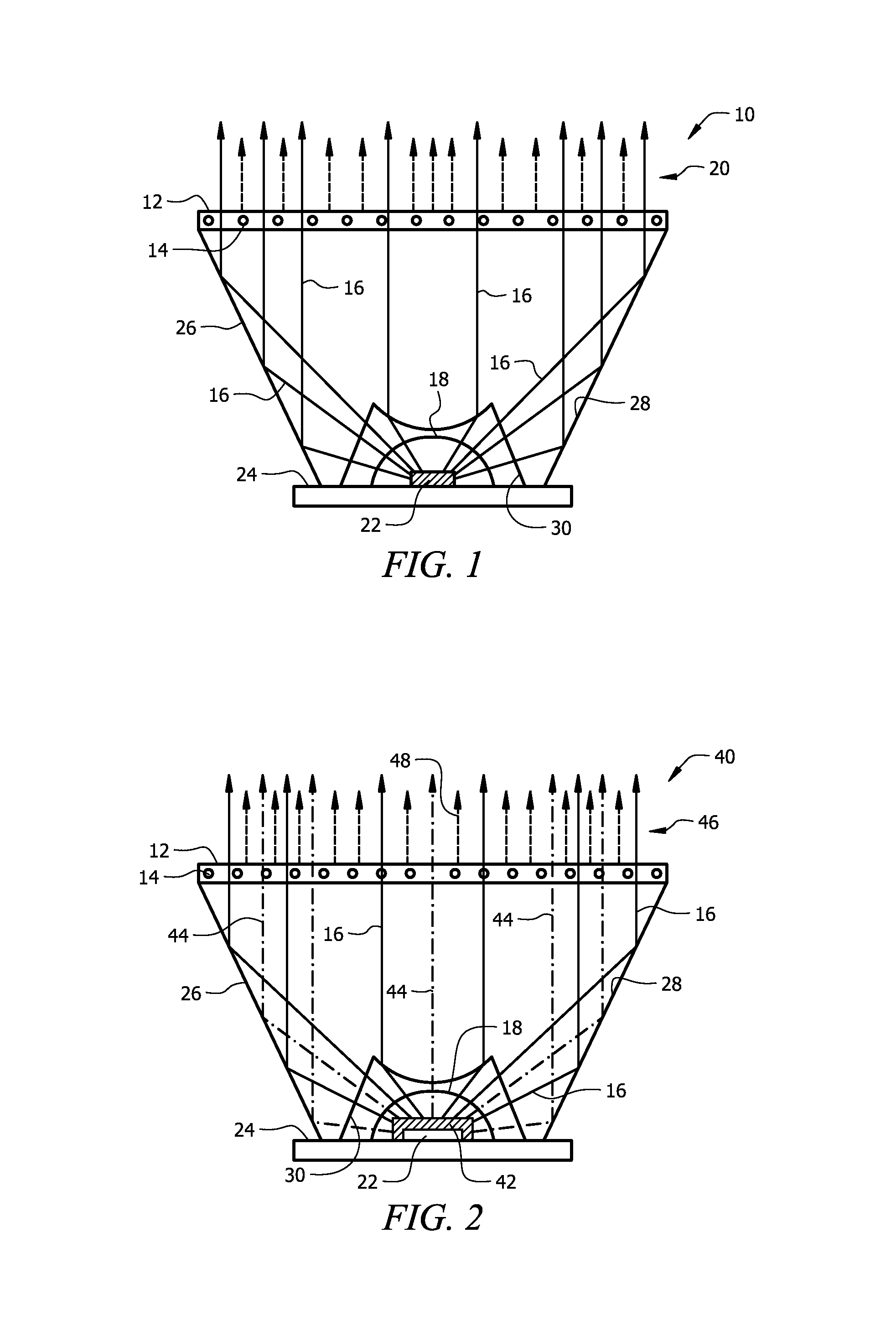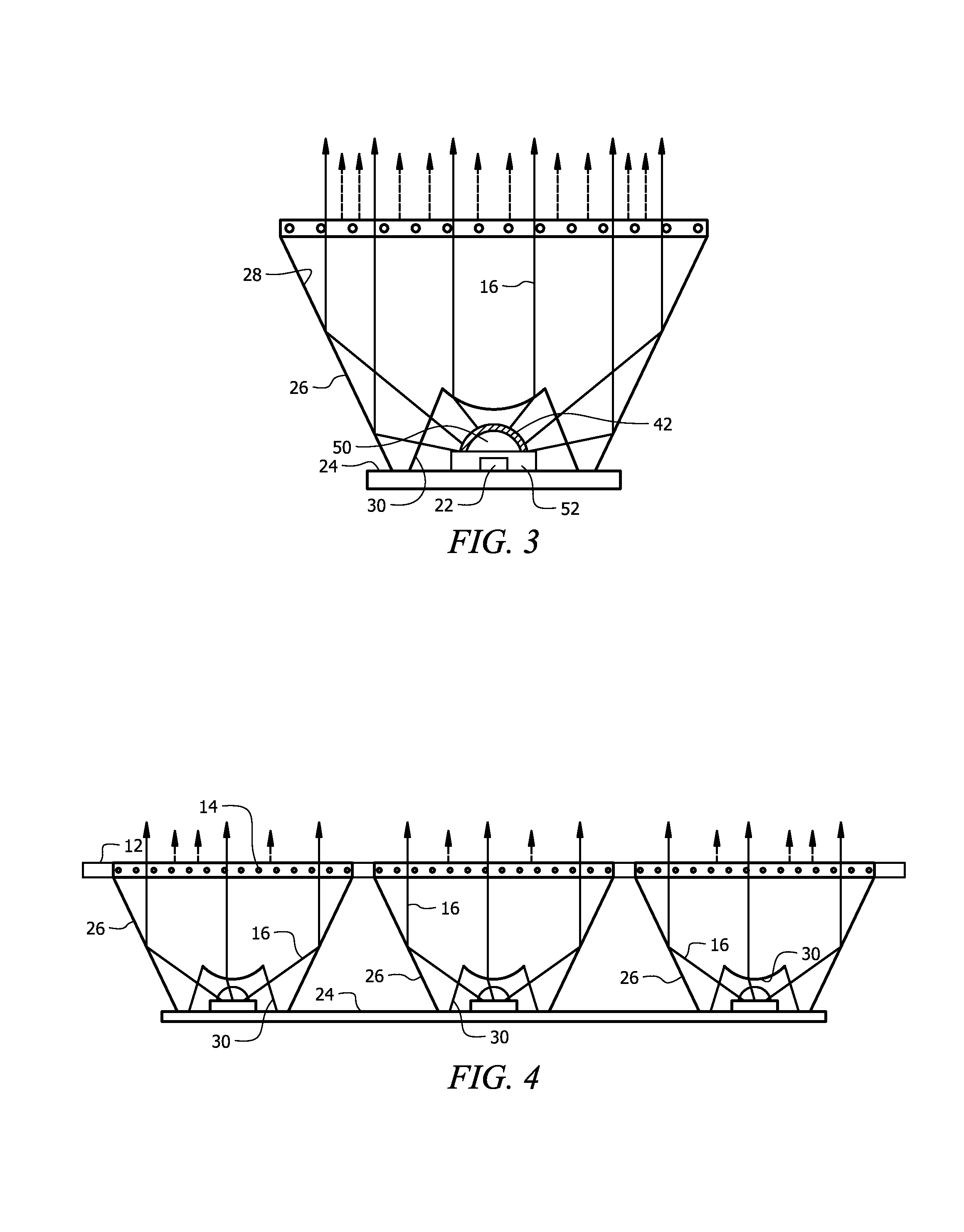High efficiency solid state directional lighting including luminescent nanocrystal particles
a technology of luminescent nanocrystal particles and solid-state directional lighting, which is applied in the direction of discharge tube luminescnet screens, semiconductor devices for light sources, lighting and heating apparatus, etc. it can solve the problems of reducing the luminous insufficient phosphor conversion efficiency of conventional warm-white leds, and very energy-inefficient light sources. to achieve the effect of reducing heat transfer
- Summary
- Abstract
- Description
- Claims
- Application Information
AI Technical Summary
Benefits of technology
Problems solved by technology
Method used
Image
Examples
Embodiment Construction
[0022]A first embodiment of the novel lighting device is denoted as a whole in FIG. 1 by the reference numeral 10.
[0023]Novel solid state directional lighting device 10 has a color conversion layer 12 including luminescent nanocrystal particles 14. At least a portion of collimated primary short wavelength light 16 from semiconductor light source 18 is converted into at least one long wavelength spectral light 20.
[0024]Semiconductor light source 18 includes at least one short wavelength semiconductor light emitting diode (LED) 22 mounted on printed circuit board 24. LED 22 emits a primary short wavelength light with peak wavelength of 380 nm-475 nm. Light from semiconductor light source 18 is reflected from frusto-conical sidewalls mounted about the periphery of said printed circuit board, said sidewalls forming a collimation lens 26 having a total internal reflection surface 28. Semiconductor light source 18 is positioned in cavity 30 as an entrance of said collimation lens.
[0025]Co...
PUM
 Login to View More
Login to View More Abstract
Description
Claims
Application Information
 Login to View More
Login to View More - R&D
- Intellectual Property
- Life Sciences
- Materials
- Tech Scout
- Unparalleled Data Quality
- Higher Quality Content
- 60% Fewer Hallucinations
Browse by: Latest US Patents, China's latest patents, Technical Efficacy Thesaurus, Application Domain, Technology Topic, Popular Technical Reports.
© 2025 PatSnap. All rights reserved.Legal|Privacy policy|Modern Slavery Act Transparency Statement|Sitemap|About US| Contact US: help@patsnap.com



